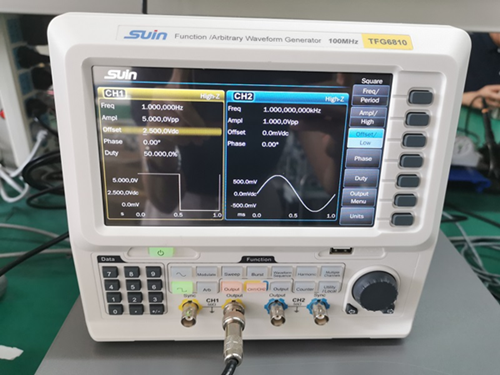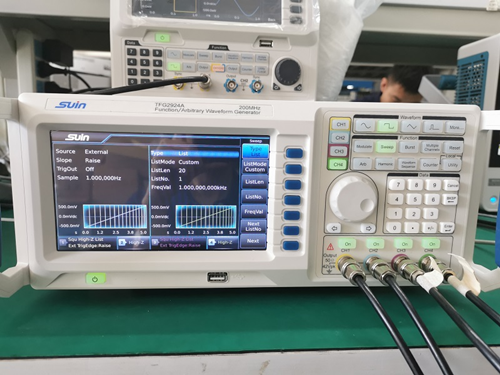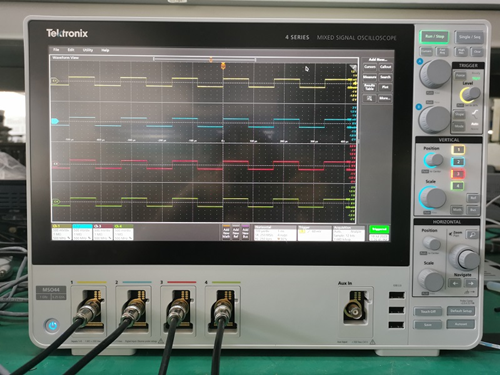

Nowadays, many arbitrary waveform generators can provide frequency sweep functions, basically, linear sweep and logarithmic sweep can be realized. Linear sweep means the output frequency changes in a constant way of some Hz per second, which is more suitable for applications of some narrow sweep frequency range. Logarithmic sweep is the output frequency changes in a constant way of octave per second, which is more suitable for applications of some wide sweep frequency range.
But in the actual electronic development work, the frequency sweep types required by the engineers are diverse, some need multiple channels frequency list sweep, and some need more complicated frequency sweep.
Here we take Suin TFG2900A as an example to introduce how to realize multiple channels frequency list sweep.
Firstly, we need another arbitrary waveform generator, using Suin TFG6800 to provide the external trigger signal to TFG2900A. Connect TFG6800 with TFG2900A via a BNC testing cable with four connectors or four BNC testing cables with three BNC T-mode connectors. Set the external signal in TFG6800, as Fig. 1 shown.

Fig. 1 Set the external signal on TFG6800
Then set the frequency list sweep function parameters in four channels on TFG2900A, such as external trigger source, sample rate, list length, frequency, sync output, etc., according to your actual requirement, as Fig. 2 shown.

Fig. 2 Set frequency list parameters in four channels on TFG2900A
After the above all is set to OK, press the output key on TFG6800, and the signal will be output according to the previous setting, which can be easily and clearly displayed in a four channels oscilloscope, as Fig. 3 shown.

Fig. 3 four channels frequency list sweep displaying in a four channels oscilloscope
If you want to know more information about TFG2900A four channels arbitrary waveform generator or if it is helpful for your testing work, welcome to contact us at once.
Dec. 19, 2025
Differences Between Function Generators, Arbitrary Function Generators, and Arbitrary Waveform GeneratorsNov. 18, 2025
Uses and Benefits of Programmable Power SuppliesNov. 07, 2025
Suin at 11th Feria FISE 2025 in Colombia